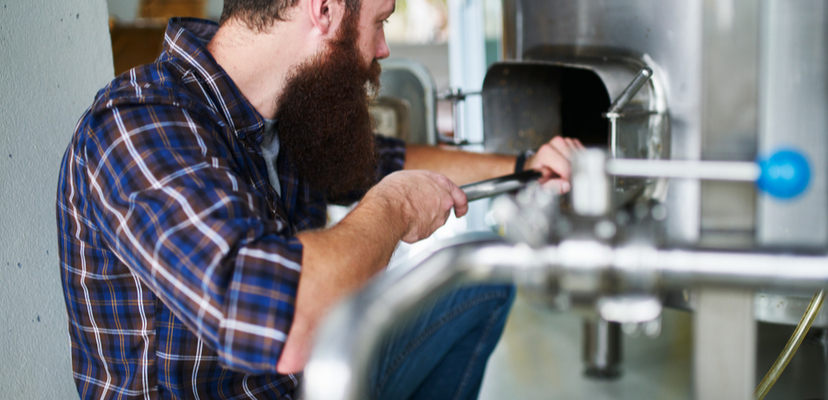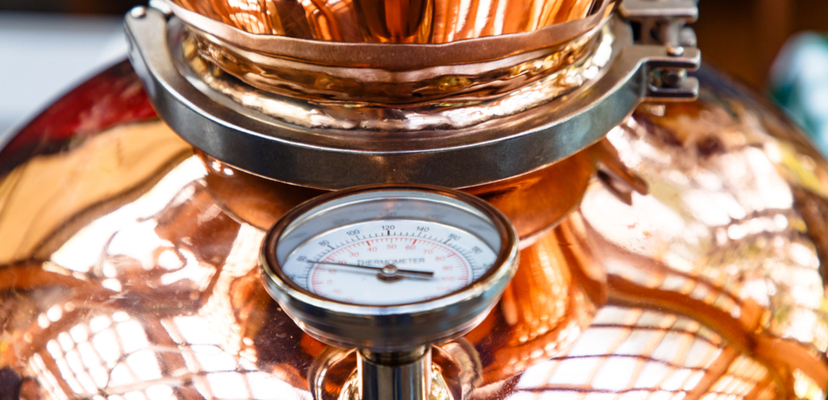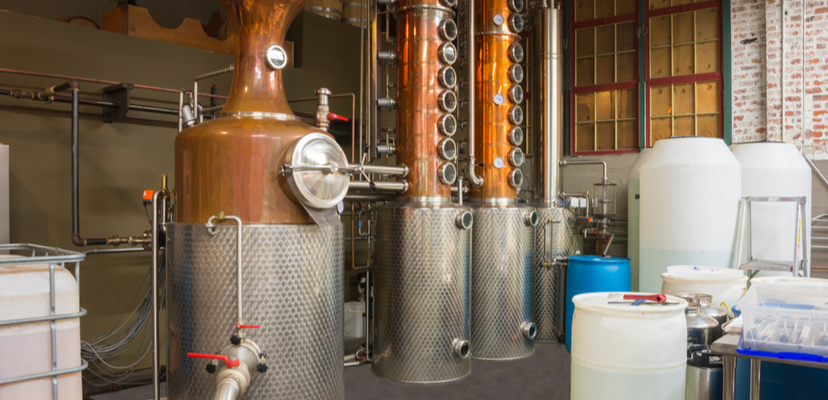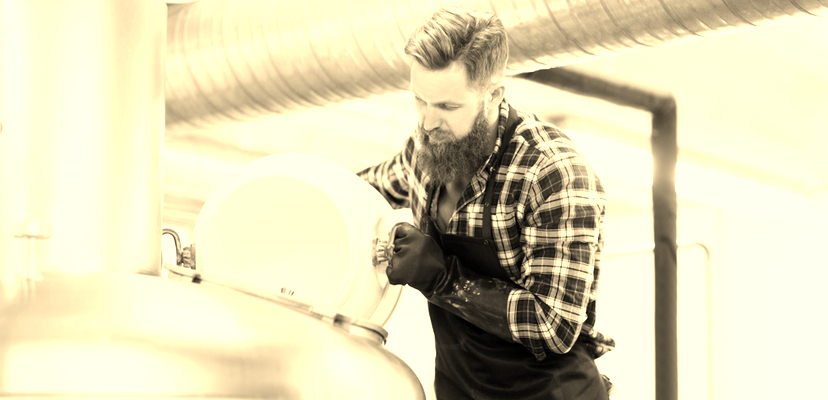As many of you know all too well, there’s a lot that goes into craft beverage production behind the final sparkling result. Between fermentation, aging, distilling, brewing, filtration, and marketing….this business can get messy.
After all, we’re dealing with organic materials, often in large amounts. We rely on our equipment to produce safe, sanitary, and flavor-perfect products. You’ve invested in your equipment and raw materials that are meant to help you distill or brew that beautiful final result. What we don’t see as much online, is information about the maintenance that goes into maintaining a healthy process.
Cleaning up and keeping your equipment in good working and sanitary order doesn’t have to be a guessing game. There’s no need to fumble for the right information or lose valuable time with DIY shortcuts or trial and error.
When it comes to going straight to the source for expert information, we’re big fans of the folks over at Five Star Chemicals. They make products specifically for craft beverage production. Not only do they make specialty cleaning products, they help take the guesswork out of using them the right way. In fact, they’re passionate about informing new and experienced craft producers alike about how to get clean results using Five Star products.
We asked them for their expert opinion on what to use when, so that your equipment lasts for as long as possible and so your products and your distillery gets glowing reviews.
The Difference Between Cleaning and Sanitizing
Five Star Chemicals recommends developing a routine based on 8 Rules.
They are:
- You can only sanitize clean equipment.
- Dirty equipment will always contain bacteria.
- Cleaners are not sanitizers.
- Sanitizers are not cleaners.
- Balance time, temp, and agitation.
- Do not overuse chemicals.
- Cleaners and sanitizers must touch all surfaces.
- Never add water to chemicals; always add chemicals to water.
Rules 1 through 4 have to do with cleaning and sanitizing. The important takeaway here is that there is a difference between cleaning and sanitizing, and there are different products for each step of the process.
In short: Cleaning removes soil. Sanitizing removes bacteria and other pathogens.
While not all distillers sanitize because they rely on high temperature processing to kill pathogens, Five Star always recommends sanitizing (see Rule 2: Dirty equipment will always contain bacteria.). Sanitizing removes the bacteria and organisms that naturally grow in the soil left behind from craft brewing or distilling. Remember, clean equipment is going to produce a clean, stable product that never harbors off flavors (or worse).
Craft productions on a budget may try to make their own cleaning ingredients using bleach or grocery store ingredients. The thing is, your equipment will last longer and produce a more consistent product if you use a product built for brewing and distilling instead of something designed for cleaning, well, laundry.
Building your complete cleaning and sanitizing routine should look something like this:
- Clean: Citric Acid or PBW
- Sanitize/Rinse: Star San or Saniclean
- Passivate/Stabilize: 5.2 Stabilizer
1. Cleaning: Citric Acid or PBW

Manually cleaning out visible residue and leftover product is always the first step before chemical cleaning.
Citric acid is the number one favorite cleaner over anything else craft producers use, especially for those that use copper equipment. It’s a simple, cost-effective cleaner, it also passivates (removes and prevents rust), is safe on copper and stainless steel, and doesn’t scratch equipment.

Citric acid is a multi-use product that can also be used to adjust pH in distilling mash.
 Even though it’s not a hazardous material, Five Star recommends that you always use gloves and wear safety glasses when handling cleaning products.
Even though it’s not a hazardous material, Five Star recommends that you always use gloves and wear safety glasses when handling cleaning products.
If your equipment or components contain aluminum, go for another cleaner like PBW. Citric acid doesn’t corrode aluminum, but it will turn the material black over time.
PBW, or Professional Brewer’s Wash, is an environmentally friendly, alkaline, and non-caustic cleaning alternative to citric acid.
It comes in powder form that you mix in a solution (water) and it’s built for craft beverage environments like distilleries. It’s safe and effective to use on aluminum and brass. PBW’s benefits include:
- Quick and easy rinse time
- Removes calcium oxalate (beer stone)
- Removes yeast build up
- Counteracts acidic CO₂
Looking for the right product for the material you want to clean?
| Product | Works well with… | Is good at… |
| CITRIC ACID | Copper and stainless steel |
Keeping copper looking fresh, preventing rust, and adjusting pH in a mash |
| PBW | Aluminum and brass | Removing yeast build-up and counteracting acidic CO₂ |
| STAR SAN |
Most materials, but not in electrical equipment like pumps |
Adhering to every surface to get it impeccably sanitized |
| SANICLEAN | Stainless steel, but not iron | Completing the process with a final rinse |
2. Finding a Balance

Rule 5 is Balance time, temp, agitation. That basically means that if you decrease one, you have to increase the others.
Sanitizers and cleaners recommend varying levels of time, temperature, and agitation. For example, to properly clean using PBW, you want to get water temp up to the 140-150 degree mark. If you can’t achieve that, you have to increase contact time and agitation in order to make up for the lower temperature.
Speaking of agitation: Don’t fear the foam! Products like Star San are used as sanitizers. Star San is high foaming, or high agitation, and therefore adheres to every surface. Since the foaming takes care of agitation, it doesn’t require as much processing time as other sanitizers.
 Star San is not recommended for use in pumps (but may be used in manual pumps).
Star San is not recommended for use in pumps (but may be used in manual pumps).
Rule 6, Do not overuse chemicals, is for all you More is better! people. In this case, more is not better—it’s just as important to follow the directions on your cleaning products as it is to follow the recipe you developed for the beverages you produce.
3. Preventing Infection & Promoting Longevity

Let’s talk about rule 7. Cleaners & sanitizers must touch all surfaces. Preventing infection is the main goal of cleaning and sanitizing, so it makes sense that once you start the cleaning process, it’s important to make sure you get every nook and cranny. Again, Star San is a beneficial product in that it can help ensure that every surface is sanitized since it’s high-foaming and gets into all the nooks and crannies that the eye can’t see.
Once you’ve completed the cleaning and sanitizing steps, many surfaces require a final application to prepare the equipment for processing a new batch and to help promote long equipment lifespan.

Passivating stainless steel prevents ions from getting to the surface, oxidizing, and forming rust. You’ve likely spent a lot of money on your stainless steel equipment, so it’s important to make sure it lasts for many years to come.
Saniclean is a low-foam anionic acid used as the C.I.P final rinse. It is safe on stainless steel, but can corrode iron. Citric acid can also be used to passivate stainless steel. Acid #5 is another low-foam Five Star product formulated to passivate stainless steel and remove protein stains. 5.2PH Stabilizer gets the PH down in kettles and tuns.
Safety First
Finally, safety first. The last rule states, “Never add water to chemicals; always add chemicals to water.”
Not following safety rules when dealing with chemicals can result in serious injury from splash-back. Always use gloves and safety goggles for personal protection. If any splash-back occurs, adding chemicals to water instead of vice versa helps prevent chemicals from coming in contact with your face or other chemicals nearby.
Ready to feel totally confident that your equipment is so fresh and so clean? Get in touch to speak with one of our supply professionals about cleaning equipment and best practices to help make your production a squeaky clean success.
Prefer to start shopping?




